Boeing’s 737 Max 8 has been grounded for over seven weeks at the time of writing this article. This followed concerns over the Maneuvering Characteristics Augmentation System (MCAS) fitted to the variant after two fatal crashes in Indonesia and Ethiopia. Boeing shares have fallen and 737 Max 8 orders have been cancelled. Major customers Southwest Airlines and American Airlines have said they presume the grounding will last until August 2019.
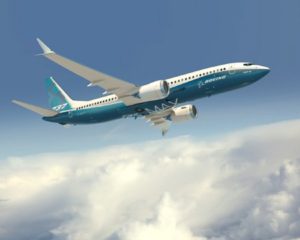
Airliner groundings are far from without precedent. The world’s first jet airliner, the de Havilland Comet 1, was grounded from 1954 to 1958 following a series of crashes – and Concorde was grounded for just over a year after the loss of an Air France aircraft in 2000.
However, in a worrying parallel for Boeing, another American airliner suffered reputational loss not only for the specific model but the manufacturer itself. The tale of the DC-10 has lessons for Boeing.
A DESIGN FLAW PASSED FOR SERVICE
When Mahommed Mahmoudi started his shift at Paris Orly airport on 3 March 1974 he can only have imagined a routine few hours of baggage loading on behalf of the airlines who held a contract with his employer, handling agent Samor Co.
One of those airlines was Turkish Airlines. Their Istanbul-Orly-Heathrow service was unusually busy with fifth-freedom passengers that day, joining the flight during its stopover at Paris and travelling to London. The reason was twofold. An international rugby tournament had concluded in Paris and many passengers had been stranded by a strike by BEA staff, now finding themselves rebooked on the Turkish flight.
THY981 was operated by a McDonnell Douglas DC-10-30, registered TC-JAV and named Ankara, one of three acquired by Turkish Airlines. The airframe had originally been destined for All Nippon Airways but, when that airline opted for the Lockheed TriStar, the airframes originally destined for ANA were parked at the factory in Long Beach, California.
During this time modifications which had been required to a cargo door on the DC-10 were being carried out by McDonnell Douglas. These modifications followed a near-disaster when an American Airlines DC-10 had suffered an explosive decompression over Windsor, Ontario, Canada. That flight had made a safe emergency landing and, following an investigation by the National Transportation Safety Board (NTSB),
The paperwork for TC-JAV was signed off by the relevant employees at McDonnell Douglas, showing the Federal Aviation Administration (FAA) that the necessary modifications had been carried out on TC-JAV. There was just one problem. The work had not been carried out.
As THY981 passed through 11,500 feet the lock on the cargo door, which had not latched properly, gave way. The cabin floor collapsed and xx passengers were sucked out. All three hydraulic systems followed the same route on the DC-10 and those to the tail of the aircraft went through the cabin floor. They were severed in the explosive decompression.
There was nothing the flight crew could do. The airliner plunged to the ground, exploding in a ball of flame in the Ermenonville Forest, 25 miles north-east of Paris. Three-hundred and forty-six people were killed. It was the worst-ever air disaster at the time, the first involving a fully-laden widebody airliner and remains the second worst single-aircraft accident.
But the accident and the way it happened was not without precedent. Two years earlier, the aforementioned American Airlines DC-10, en route from Detroit to Buffalo, suffered exactly the same explosive decompression, from the same cargo door. A gentleman’s agreement between the FAA and McDonnell Douglas meant that an airworthiness directive was not issued and DC-10s were not grounded subject the necessary remedial work being carried out.
Following the THY 981 disaster, investigations by journalists and a lawsuit uncovered mistakes and deliberate cover-ups by McDonnell Douglas. Cost cutting and attempts to keep the design weight of the DC-10 within agreed limits had led to an inadequate design for the cargo lock door. Despite misgivings from a senior engineer at contractor Convair, the design had been approved and installed.
Despite all this, sales and deliveries of the DC-10 continued throughout the mid-1970s. But another disaster was to sully the reputation of the DC-10 even further.
On Friday 25 May 1979, Captain Walter Lux rotated N110AA, a DC-10-10 of American Airlines, from runway 32R at Chicago’s O’Hare airport. Engine one and its pylon separated from the port wing, severing hydraulic and electrical services as it travelled up over the top of the wing. This led to an asymmetric leading edge slat setting with those on the port wing retracting due to the lack of hydraulic pressure. N110AA crashed into a disused aircraft hangar, killing all on board along with two people in a nearby trailer park hit by flying debris.
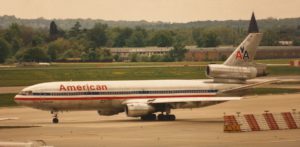
Investigations found that an improper procedure for engine replacement had been used by American Airlines. Instead of removing and replacing engine and pylon separately, mechanics had used a fork lift truck to detach and replace the assembly as one. This saved man-hours but meant that undue stress was placed on the pylon attachment points.
Although this was a maintenance rather than a design issue, the FAA grounded all DC-10s in the United States – a procedure copied by other major aviation authorities worldwide. Coupled with the previous problems with the cargo door the DC-10’s reputation was further damaged in the travelling public’s eyes.
Two further fatal DC-10 collisions in 1979 resulted in headlines referring to the airliner’s perceived safety record. Neither was the fault of the airframe – a Western Airlines flight landed on a runway closed for maintenance and an Air New Zealand aircraft collided with an Antarctic mountain in white-out conditions – but this did not trouble the headline writers.
Saddled with nicknames like “Death Cruiser” the airliner was actively avoided by some passengers and was dropped from airline advertising. Orders for the type dried up and deliveries through the 1980s were measured in the teens. There were additional factors in this, including competition from the Lockheed, Airbus and Boeing products in a limited widebody market, but the DC-10 never regained its reputation and was the last airliner to use the “DC” nomenclature.
A DIFFICULT PATH
Boeing has a longer history, a wider product range and customer base than McDonnell Douglas did before its eventual takeover by the Chicago-based corporation. Boeing also doesn’t rely solely on commercial airliners. Nonetheless, Boeing has a tricky game to play – reassuring the travelling public, satisfying regulators worldwide and keeping its customers onside. Not to mention settling lawsuits – in or out of court. The whole aviation industry needs Boeing to negotiate this difficult path successfully over the coming months.
The full story of DC-10’s troubled accident history, including an in-depth account of the loss of Turkish Airlines 981 and its aftermath can be found in this excellent book by Samme Chittum, published by the Smithsonian Institute.


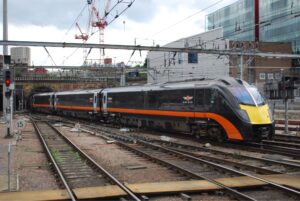

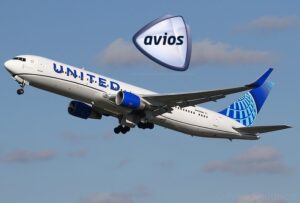
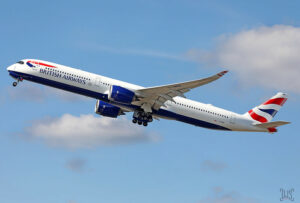
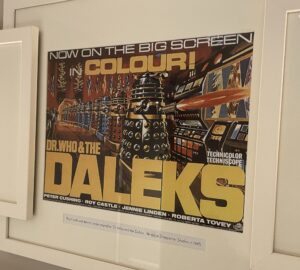
4 Responses
Wow, I had no idea of many of the disasters you’ve referred to here.
It’s true that public perception can make or break a product, or company for that matter. With the media’s need for ratings, it’s not shock to me that the headline writers don’t take all the variables into account when trying to come up with those eye-catching titles. Much like blog writers an their keyword research, although I’d argue most blog writers choose titles that are actually relevant, although I’ve seen a few go for the shock factor.
I actually have an affinity for aviation and have been trying to get my Private Pilot license for several years now. It’s time or money, I’ll have one but not the other at any given moment. I suppose it’s a fine line between company viability and profit and safety concerns. Still, history should be a good teacher and these companies need to do their best to make sure history does not repeat itself.
I hope Boeing will make it through this latest issue, and I think they will, but at the same time, do what’s necessary to insure things like this don’t happen again. I don’t know all of the details but, if a new system, designed to make flight safer, is introduced, I think it should be extensively tested before pushing it out where it can affect the public. I’m still surprised that the one time issues were being observed and the one guy turned off the system and everything was fine again, that that didn’t make it around to other pilots very quickly. I would think that would be something they would share with one another.
Thanks for the great read. I think I may take a closer look at the DC-10 and McDonnell Douglas. I think it will be a good read.
Scott
Thank you, Scott. Good luck with the private pilot’s licence.
Hello RobMany airline companies don’t maintain their airplanes as they should. We could witness a lot of airplane crashes that are caused by bad maintenance, not by factory mistake. But in airline business, when airplane crashes it’s not matter why he crashed, they ground all the planes of that type until the reason of the crash is found. And even when it’s only pilot mistake, company suffers huge loses.
Recent crash of F35 Lightening II in Japan caused many problems for Lockheed. It will affect it’s future production for sure, and the reason of the crash is still unknown. This is a military aircraft, but it is the same problem. That specific aircraft got bad reputation after it’s crashed.
You mentioned that there was a number of people that didn’t wanted to fly with airline companies that use DC 10’sYou probably remember what happened with Malaysia Airlines Boeing 777 on MH370 flight? Couple months later, an aircraft from the same airline, and same type crashed in Ukraine, that was a MH17 flight.
That was, you can say the end of Malaysia Airlines. After those two crashes, nobody wanted to fly with that company. What were the reason for that crashes, it doesn’t matter anymore.
Aircraft maintenance is generally done well but a lot depends on the oversight of the relevant aviation authority. Neither of Malaysian’s losses were due to maintenance but, whatever the cause, a company’s reputation can easily be damaged by a high profile accident if the aftermath is not handled well.